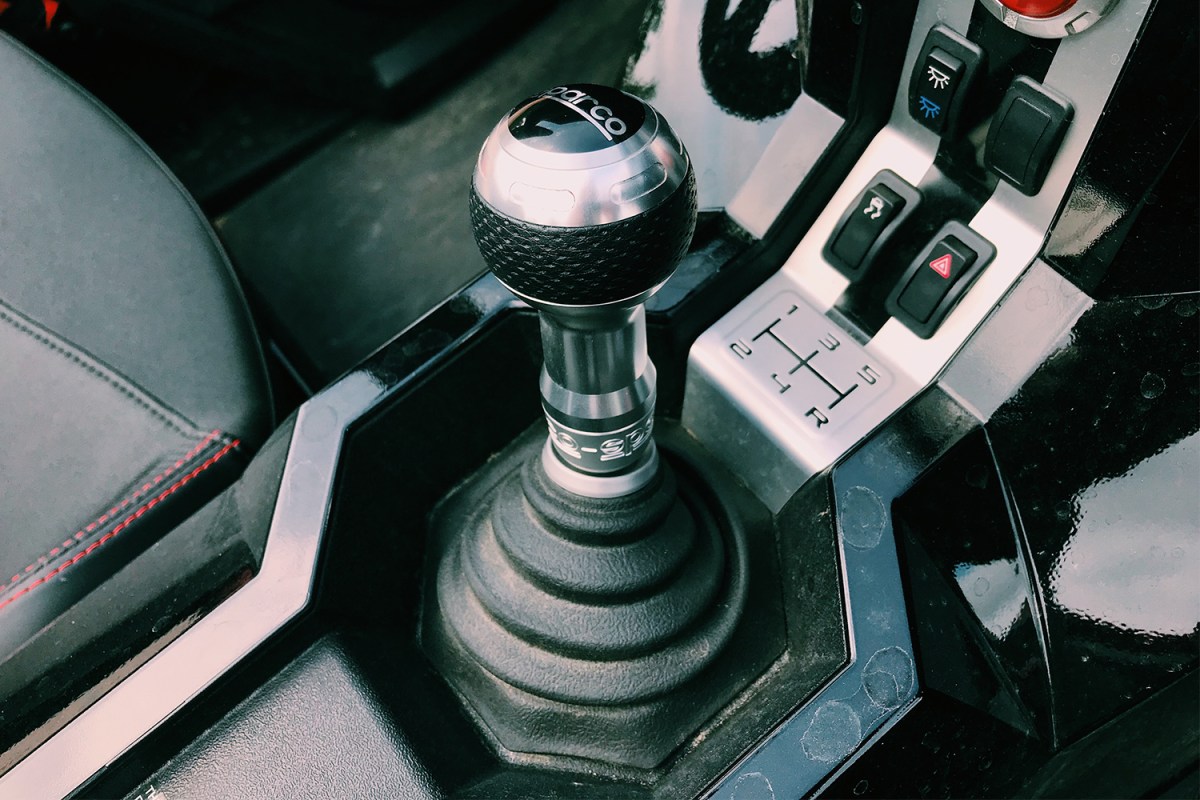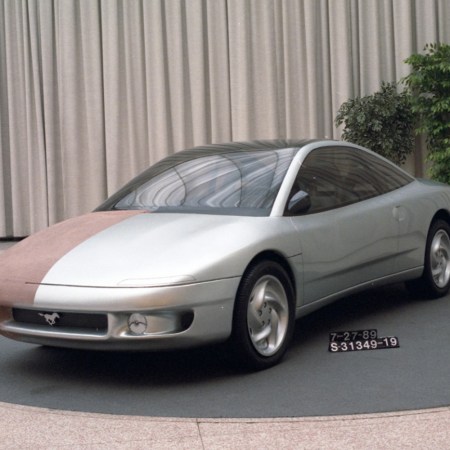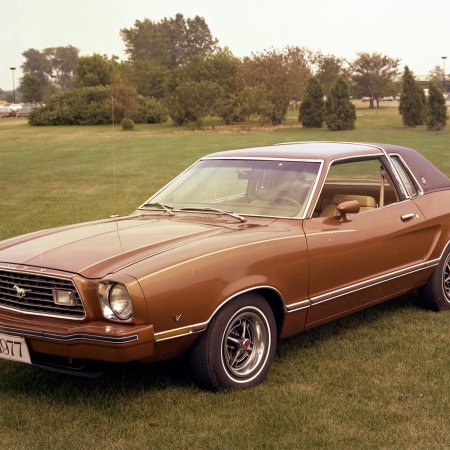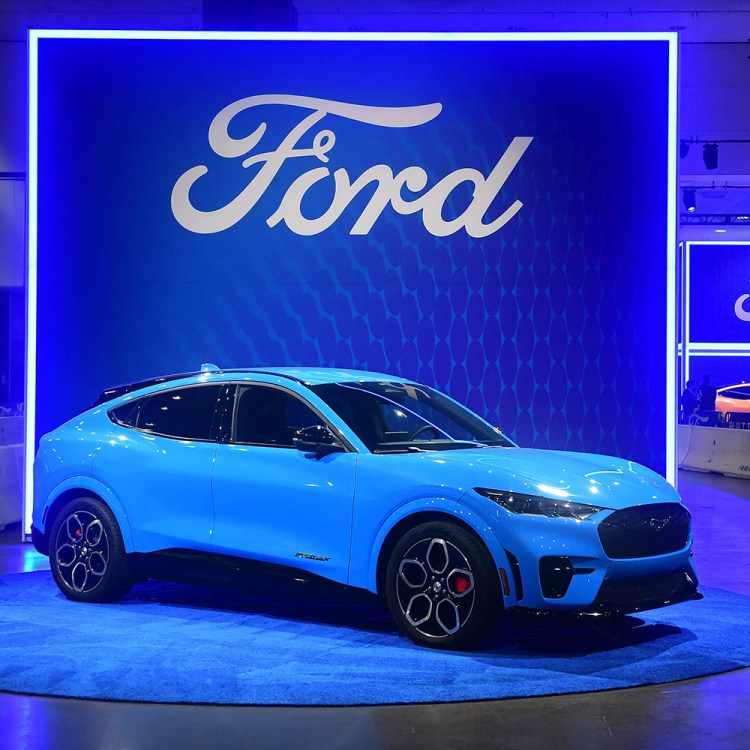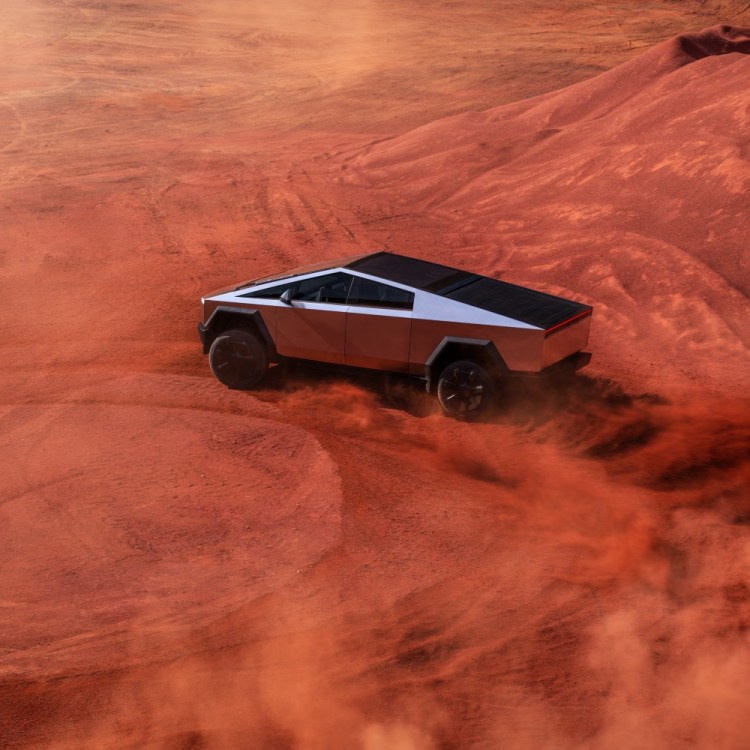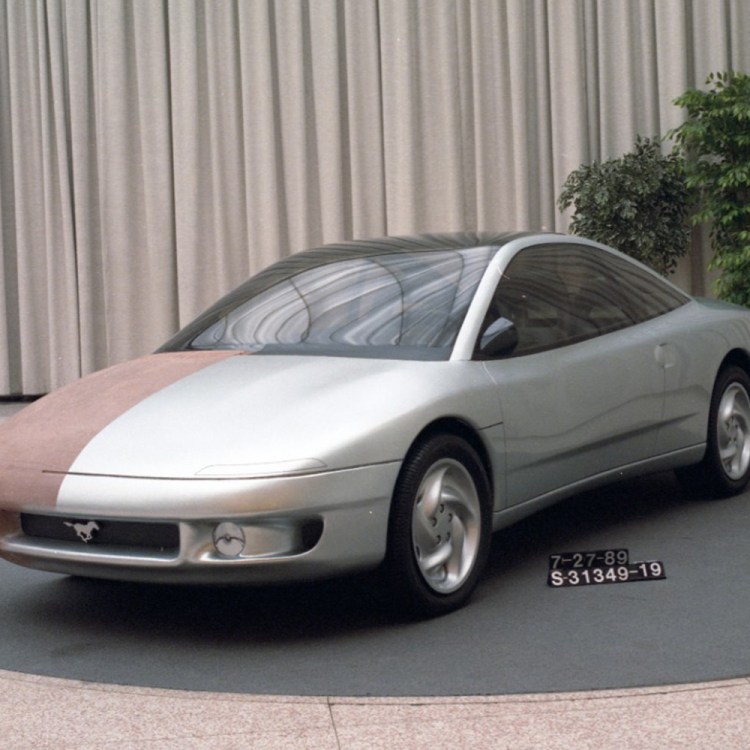When I was 14, my mom bought a BMW Z4. It was black. It was a convertible. It was the kind of car that prompted men at stoplights to shout, “Want to switch keys?!” (It still is, years later.) It was also a manual.
That last detail didn’t register at the time, as I didn’t grow up in a gearhead family and wasn’t yet old enough to get my learner’s permit. I was more focused on entering the sublime in the passenger seat while driving with the top down and the seat heaters blazing. Then I turned 15. We didn’t have any other manual transmission cars, and my mom wasn’t about to teach me in her precious, hard-won BMW (she likes to say she got it with a stick shift so me and my brothers couldn’t borrow it). So I learned how to drive in a lumbering Ford Expedition with an automatic.
Suffice it to say, I never learned how to drive a stick shift. But my lack of that skill — which used to be a rite of passage in America — reflects the rest of the country.
“Last data I saw, only 18% of the country knows how to drive a manual, and only 3% of the cars sold in the U.S. are manuals,” said Garrett Moore, Slingshot Product Manager, when I spoke with him recently at the Polaris headquarters. The data he’s citing there is from 2016, and the numbers have been on the decline since. According to Edmunds.com, only 2% of vehicles sold in the U.S. in 2018 were manuals.
This shouldn’t come as a shock to anyone. The demise of the manual has been a well-known inevitability for a while, and a topic that has grinded the gears of automotive outlets and clutch connoisseurs for just as long. One of many examples: Last year, the Chicago Tribune published a story about “endangered” stick shifts, then a month later the paper was basically forced to write a follow-up because so many people wrote in defending it.
That passion is what I set out to look at. We know the stats, we know automakers are cutting the option (even the beloved 2020 Corvette Stingray will not be offered in a manual), we are aware! But despite all of that hard data, should we as Americans take it upon ourselves to learn the skill ourselves, including us adults who were never taught, and then pass it onto our kids?
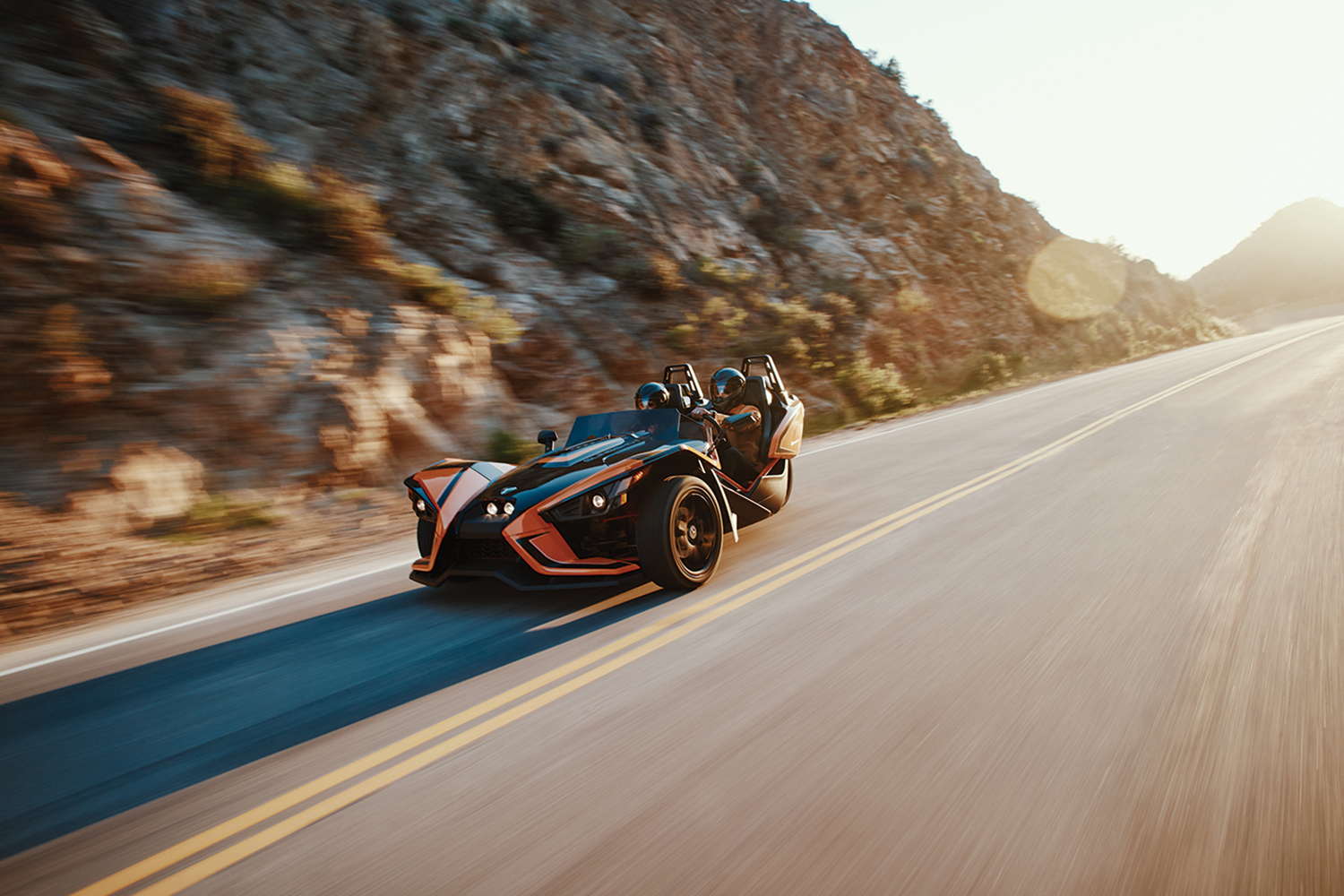
Can You Learn to Drive a Manual as an Adult?
That question is what drove me to meet with Garrett Moore in the first place. (That’s in the literal sense, all the way out to farm country-adjacent Medina, Minnesota.) Before our interview, he spent a good 45 minutes teaching me, for the first time ever, how to drive a manual. I ended up at Polaris of all places because for the entire month of July, tied to National Stick Shift Day on the 16th, the company was offering free stick shift driving lessons — in the Slingshot. You know the Slingshot, it’s that three-wheeled hellion that looks like someone took a pizza cutter to the Batmobile. I pushed down a clutch for the first time in that.
Honestly, I felt self-conscious not knowing how to drive a stick as an adult (especially when I learned that Moore is a year younger than me). So I texted a group of high school friends to see if any of them had learned to drive a manual back in the day. Of the seven, four had learned to drive them at one point, but I’d only trust one of them now because everyone drives automatics (and one rides the subway). Another of my friends who never learned said he would still like to sometime.
That’s part of what drove me to write this article in the first place — I have the desire to learn, but just never had the opportunity. At Polaris HQ, they deal with that on day one.
“All Polaris employees have to know how to drive a manual,” said Moore. I had just pulled the Code Red Mountain Dew-colored, open-topped Slingshot back into the parking lot after maxing out at fourth gear and 45 MPH on a straight stretch of road. “You only stalled out once!” he said. “That’s good for your first time. We teach all of our interns to drive a manual on these, not all of them catch on as quickly.” But he said the company is an anomaly in its familiarity with the clutch. Not everyone is lucky enough to learn as part of their employment.
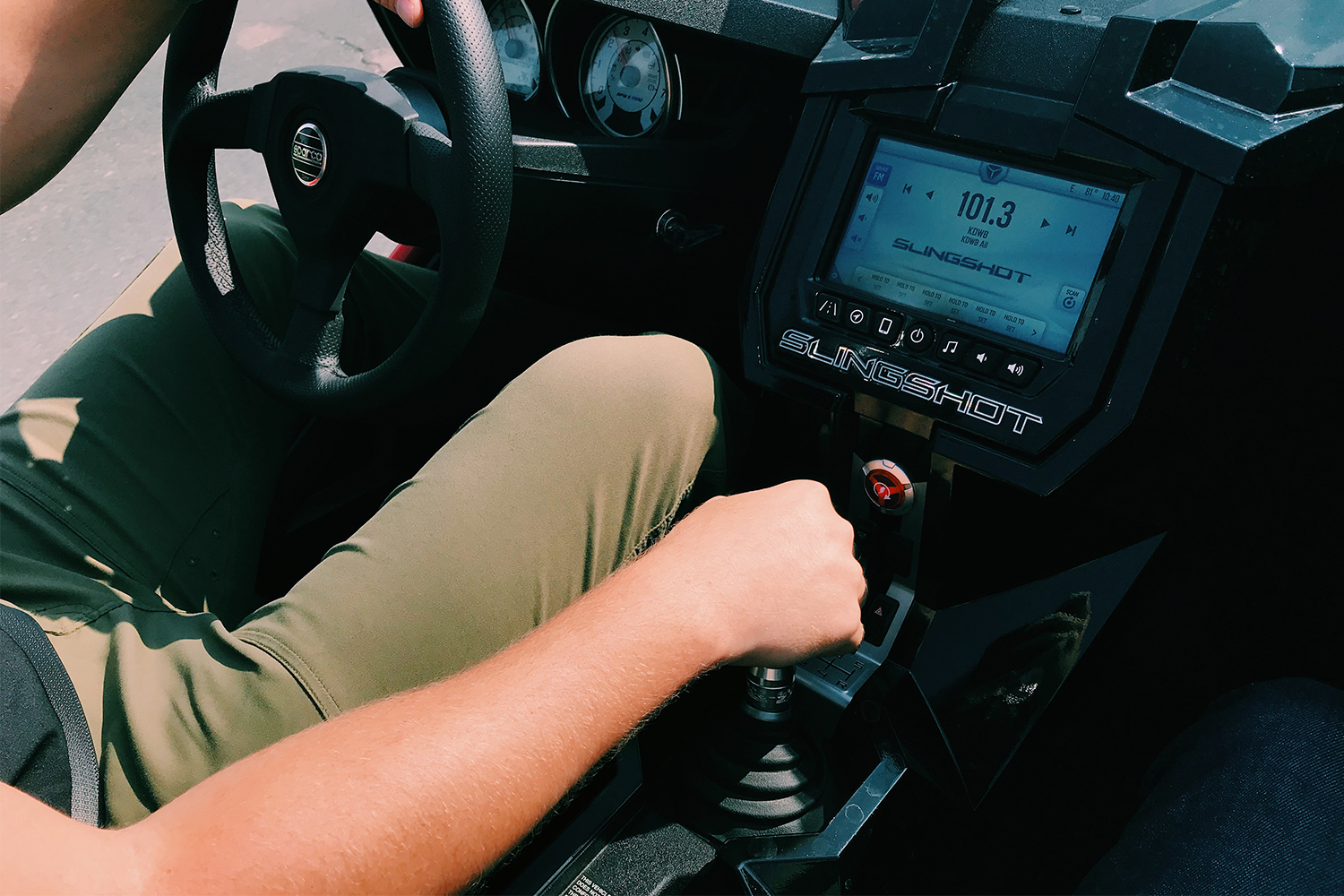
Passing the Stick Shift to the Next Generation
For Moore, he learned when he was 14-years old. His mom, who always had manual cars, taught him on a 2000 Honda CR-V she had bought, which he then used throughout high school. I heard a similar story from some of the most experienced drivers on the planet who I reached out to for their take on the “death of the manual.”
“My father used to commute to the Bay Area in a Suzuki Swift for work,” said Scott Speed, the omnipresent race car driver who has tackled everything from NASCAR to IndyCar to Formula One (where in 2006 he became the first American to race since Michael Andretti in ‘93). “He taught me how to drive it when I was 15 and it eventually became my car when I graduated high school.” One of the reasons for teaching him was that by 15, Speed already knew he wanted to become a racing driver. Now, he’s on the stacked rally team that is Subaru Motorsports USA.
One of the reasons that came up multiple times for normal people to learn the stick shift — both from experts and people on Instagram when I posted a photo of my Slingshot lesson — is traveling to Europe. The theory is that you’ll be better off as the three-pedal configuration is more common across the pond. Moore, who travels there for work, said, “It’s a skill that you learn when you grow up [in Europe], it’s just part of the culture.”
Mark Higgins proved that theory when I reached out to him. “I started driving a manual car when I was about 12 and passed my test at the age of 16 on the Isle of Man with a manual,” he said. “[An automatic transmission] was very much for the luxury market back then and smaller autos were very bad and thirsty.”
You’ve seen Higgins before, you just didn’t know it. He’s not only a rally champion around the world, he’s James Bond’s stunt driver. That’s him going by in a blur in Spectre, Skyfall and Quantum of Solace, and he’s currently working on the new Bond film. When asked if he’s driving any stick shifts on set, he said, “For all stunt cars I would always prefer a manual. The main reason is having a clutch, which gives you options in many situations especially when going sideways. [Automatics] are very good now, but too many electronics trying to control everything. As a driver, a manual car is much more rewarding as you have much more input.”
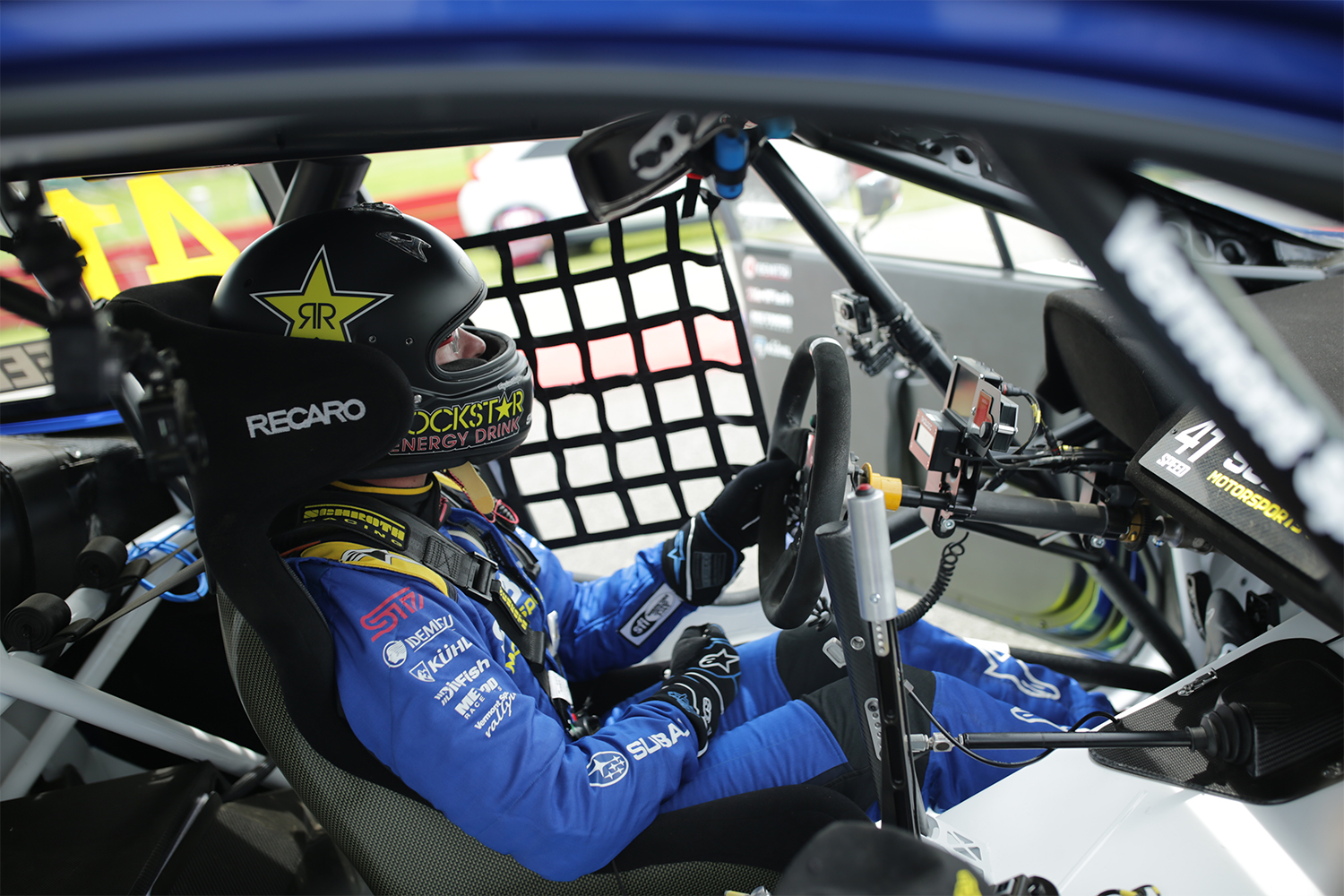
Are There Any Benefits of a Manual in a Daily Driver?
Most disciples of the manual will echo Higgins, saying that the cars are more rewarding, more engaging, more je ne sais quois. But when we’re talking pure engineering for your daily driver, automatics have come a long way from the expensive, fuel-sucking, sluggish transmissions of yore. In fact, some stick shift devotees may not be aware exactly how far they’ve come.
To dispel some of the myths surrounding the two, and to get the current state of transmissions in America, we went to Mark Takahashi, Senior Reviews Editor at Edmunds. He broke it down like this:
“For many decades, manual transmissions held an advantage. Those ‘three-pedal’ cars were almost always less expensive than their automatic counterparts and used to return noticeably better fuel economy. They also used to accelerate quicker. With advances in technology, the adoption of automatic transmissions with far more gears (up to 10 forward gears in some cases) and continuously variable transmissions, the tables have turned. Today’s vehicles with automatics have all of the response expected off the line, since low gear ratios didn’t have to change. The difference is at highway speeds, where you can now have multiple overdrive gears to lower the engine revs while maintaining vehicle speed. That saves on gas. For more performance-oriented cars, carmakers can opt for shorter, more responsive low gears for snappier acceleration. That means today’s automatics are actually quicker, too.”
Sorry, grandpa. Many of the old arguments in favor of manuals just don’t hold up anymore. Still, for all the old stereotypes that have been broken, there have actually been new reasons cropping up in recent years in favor of them. For one, states are continuing to roll out different distracted driving and hands-free laws, but driving a manual, Speed said, you never have to worry about that.
“It’s almost impossible to text and drive [in a manual] and you’re far less distracted,” he said. “I think in this day and age, with so much info at your fingertips, it’s important to take breaks. Driving should be one of those times and a manual is a pretty good way to keep your attention on the road.”
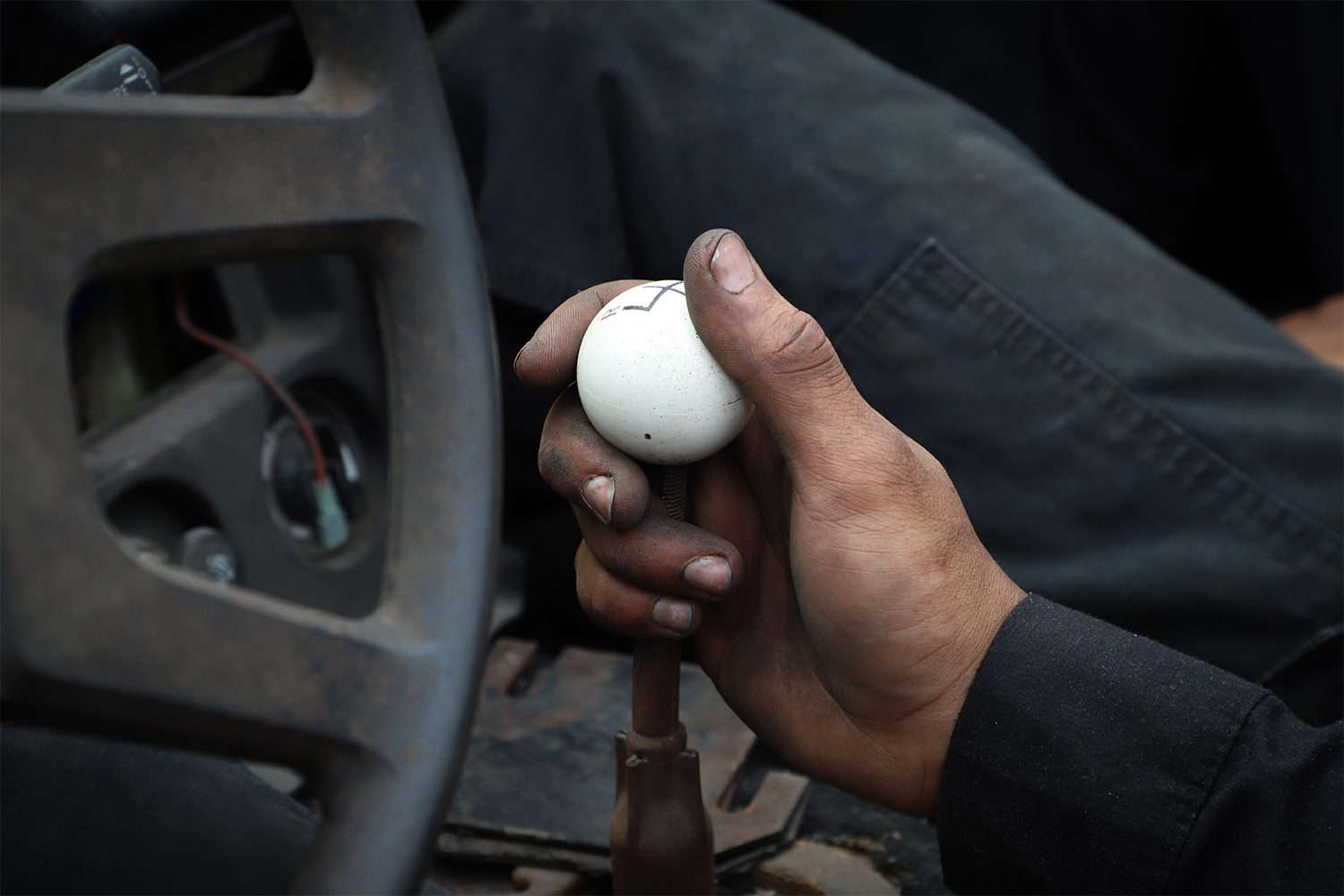
To Teach or Not to Teach?
Does that mean Speed is going to teach his kids how to drive a stick shift? “Absolutely. I have already taught my stepson Rex who is 18, and there is no question that my girls will learn as well,” he said. “Not for the joy that I get from driving a manual, but for the safety of being less distracted while driving and always having the ability to get home safe if you’re ever in a situation that you need to drive a manual car.”
In fact, the ability to get into a manual car in an emergency is something Jessica Tullman of Subaru’s PR team brought up as well. When I told her I was working on this piece, she kindly helped me, but she also offered a story of her own: “I recently asked my 16-year-old nephew how I would get to a hospital, if needed, since my car is stick and he doesn’t think he should learn. He said he’d call me an Uber! So I could potentially die in an Uber because the new generation doesn’t care about manual transmission!”
So as it turns out not every young person is as eager to learn the intricacies of the clutch as me and my high school friend. But after Moore showed me the ropes, kept his cool while I left tire marks in the Polaris parking lot, and then offered measured, but enthusiastic reassurance when I smoothly shifted between gears on the straightaway — I was hooked. And I’m convinced anyone who has the opportunity to learn for any extended period of time will be hooked too.
I asked Moore what the the normal response was when the interns were learning. Were they giddy like me? “Usually frustration,” he said. “They’re like, I know how to drive a car and I can’t drive this thing! Once they get it, they actually love it. I’ve taught people now that drive manuals all the time, and just having that connection with the vehicle, they get so excited and they love it so much that they actually choose manuals over automatics when they have the option.”
But therein lies the major caveat: “When they have the option.” What happens when you don’t have the option? That’s the predicament I find myself in. I’m currently sharing an old faithful Hyundai Sonata and looking to get a used Prius. Polaris did offer to lend me a Slingshot as a loaner to continue my manual education, which I very well might take them up on, but what then? I’ll just be like my high school friends who learned and quickly forgot.
Maybe it’s just the way of the world. I asked Higgins, Daniel Craig’s stunt driver, what he drives in his time off. “My daily car would always be an automatic as normally [I drive] long journeys and it’s easy and relaxing.” Can’t argue there.
Whether you’re looking to get into shape, or just get out of a funk, The Charge has got you covered. Sign up for our new wellness newsletter today.
